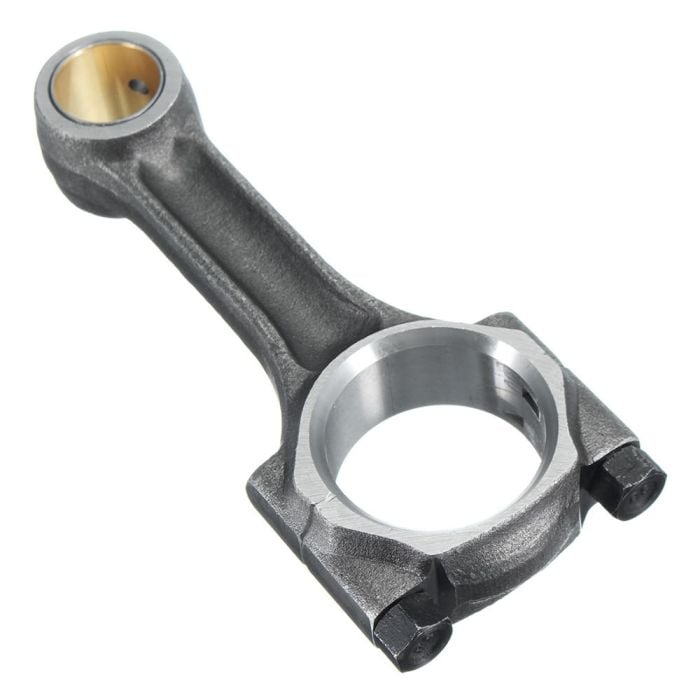Get a powerful clp engine for demanding tasks.
Get a powerful clp engine for demanding tasks.
Blog Article
Just How a Clp Engine Can Enhance Performance in Numerous Industries
The development of CLP engines notes a significant change in operational efficiency across numerous industries, driven by their capacity to enhance fuel intake and decrease downtime. Industries such as manufacturing and logistics stand to gain substantially from their durable design and consistent power output, which promise to streamline procedures and boost performance. As companies increasingly focus on sustainability along with performance, the duty of CLP engines ends up being a lot more vital. What remains to be seen is exactly how these innovations will certainly form the future landscape of industrial procedures and their effect on wider financial fads (clp engine).
Introduction of CLP Engines
CLP engines, or Continuous Fluid Propellant engines, represent a significant development in propulsion innovation, particularly for room applications. These engines utilize a continuous feed system that permits the sustained expulsion of propellant, resulting in improved performance and efficiency contrasted to typical solid or hybrid propulsion systems. By maintaining a consistent flow of liquid propellant, CLP engines can accomplish extra accurate drive control, which is critical for maneuvering spacecraft in different mission scenarios.
The design of CLP engines incorporates advanced products and cutting-edge gas administration systems. clp engine. This causes decreased weight and boosted dependability, vital factors for long-duration area goals. In addition, the continuous procedure reduces the danger of combustion instability, an usual difficulty in standard rocket engines.

Benefits in Production
The manufacturing of Constant Fluid Propellant (CLP) engines provides a number of significant benefits that improve both effectiveness and cost-effectiveness. One of the primary advantages is the structured production process, which minimizes the intricacy related to typical propulsion systems. By using liquid propellant, producers can accomplish better accuracy in engine performance, leading to optimized energy result and lowered waste.
Additionally, CLP engines facilitate a higher degree of modularity, allowing for less complicated assimilation into various manufacturing lines. This flexibility can significantly decrease preparations and improve general operational flexibility. Using CLP technology also has a tendency to minimize the requirement for considerable maintenance due to less relocating components, which converts right into decreased downtime and operational expenses.

Applications in Logistics
Leveraging Constant Fluid Propellant (CLP) engines in logistics supplies considerable advantages in operational efficiency and integrity. These engines supply a robust solution for different transport needs, enabling the smooth movement of goods across vast distances. The integral design of CLP engines permits consistent power output, which equates right into smoother and a lot more foreseeable transport routines.
Among the essential applications of CLP engines in logistics remains in durable products transportation, where they can drive both ground and aerial More Info lorries. Their capacity to maintain high performance under varying tons problems guarantees that shipment timelines are met, thus improving client contentment. Furthermore, CLP engines can be incorporated into automated logistics systems, promoting real-time tracking and maximizing course preparation.
Moreover, the durability of CLP engines reduces upkeep downtime, enabling logistics firms to optimize their functional capacities. This is particularly advantageous in warehousing operations, where effectiveness in dealing with and carrying products is critical. As logistics continues to develop, the integration of CLP engines represents a forward-thinking technique that not just enhances performance yet likewise sustains the industry's expanding needs for reliability and speed.
Effect On Energy Performance
How do Continuous Liquid Propellant (CLP) engines enhance power efficiency in transport? CLP engines use a constant circulation of liquid fuel, maximizing burning processes and maintaining a secure thrust output. This layout minimizes power losses connected with traditional combustion engines, where fuel delivery can vary and lead to inadequacies.
The constant procedure of CLP engines enables a much more efficient thermal cycle, leading to greater details impulse contrasted to conventional engines. clp engine. This equates to decreased gas consumption for the exact same amount of work done, dramatically decreasing operational prices across various transport sectors, consisting of air travel and maritime markets
In addition, the ability of CLP engines to maintain optimum efficiency under differing tons conditions top article decreases the requirement for frequent acceleration and deceleration, even more boosting gas effectiveness. Improved power efficiency not just adds to cost savings however likewise brings about lower greenhouse gas discharges, aligning with worldwide sustainability objectives.
Future Trends and Innovations
Emerging developments in Continual Fluid Propellant (CLP) engine technology guarantee to revolutionize the landscape of transport performance and sustainability. As industries pivot toward greener options, CLP engines stand at the forefront, integrating ingenious products and design approaches that boost efficiency while lessening environmental impact.
Among the most promising fads is the fostering of crossbreed systems that integrate CLP engines with renewable resource sources. This harmony can enhance gas intake and decrease discharges, aligning with worldwide sustainability objectives. Developments in computational liquid dynamics (CFD) are facilitating the design of even more aerodynamically reliable engines, leading to reduced drag and enhanced fuel effectiveness.
In addition, the growth of smart surveillance systems is established to improve functional effectiveness. These systems utilize information analytics and IoT technology to enhance engine performance in real-time, ensuring that the engines run within their most efficient parameters.
As study remains to discover alternate propellant formulas-- such as biofuels and artificial fuels-- the future of CLP engines looks encouraging. By utilizing these advancements, industries can not just enhance their performance but likewise contribute substantially to a cleaner, more sustainable future in transportation.
Verdict
In verdict, CLP engines represent a considerable innovation in effectiveness across multiple markets. Their ability to enhance gas usage and reduce functional prices, combined with a continual feed system, improves power output and operational integrity. The see this site combination of innovative products and fewer moving parts minimizes maintenance demands, while placement with sustainability goals positions CLP engines as a critical modern technology for the future. Proceeded advancement in this field assures additional enhancements in performance and environmental performance.
Report this page